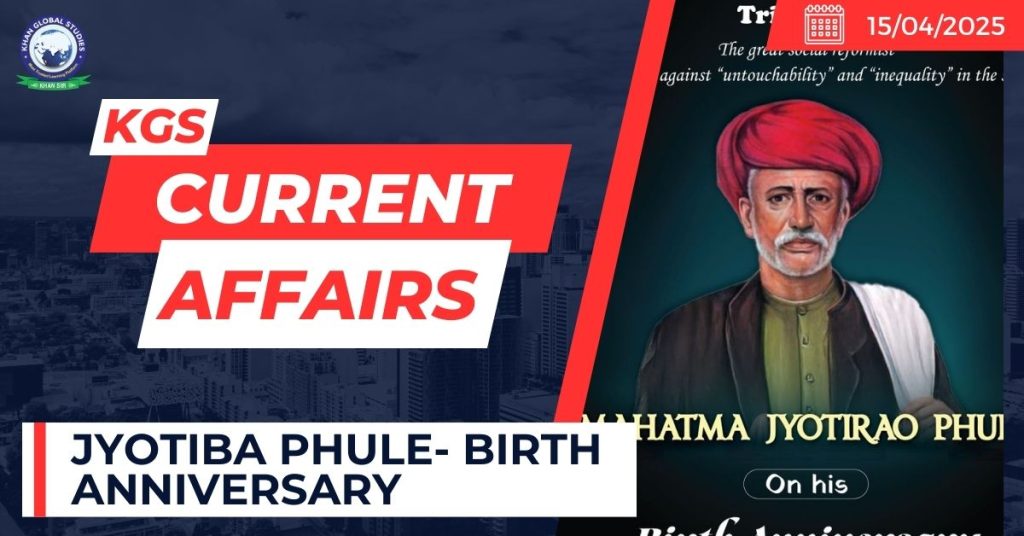Context:
India observed the 198th birth anniversary of Mahatma Jyotiba Phule.
Jyotiba Phule
Phule was born on April 11, 1827 in present-day Maharashtra and belonged to the Mali caste of gardeners and vegetable farmers.
Inspired by Thomas Paine’s book “Rights of Man” (1791), he realised that social justice could only be possible with emancipation of women and downtrodden sections of society such as Dalits who were considered untouchables by the orthodox upper castes of that time.

In 1848, Phule together with his wife began his work as a social reformer and in 1851 started two schools Shudras and Ati-Shudras in Poona for girls of low and untouchable castes.
In 1853, Jyotirao-Savitribai opened a care centre for pregnant widows to have safe deliveries and to end the practice of infanticide owing to social norms.
- The Balhatya Pratibandhak Griha (Home for the Prevention of Infanticide) started in their own house in Pune.
Phule along with his followers, formed Satyashodhak Samaj (Seekers of Truth) in 1873 to attain equal social and economic benefits for the lower castes.
- The Satyashodhak Samaj dedicated towards the removal of socio-economic backwardness of Dalits was even supported by Chhatrapati Shahu, the Maratha ruler of Kolhapur state.
He was appointed as a member of the Poona Municipality in 1876.
He was the first person in modern India to launch a movement for the liberation of caste-oppressed toilers and women irrespective of caste.
He was bestowed with the title of Mahatma in 1888 by a Maharashtrian social activist Vithalrao Krishnaji Vandekar.
It is believed by many scholars that it was Phule who first used the term ‘Dalit’ for the depiction of oppressed masses often placed outside the ‘varna system’.
Phule died on 28th November, 1890.
Phule Work’s
- Tritiya Ratna (Play) (1855)
- Powada: Chatrapati Shivajiraje Bhosle Yancha (1869)
- Gulamgiri (1873)
- Shetkarayacha Aasud (1881)
Phule’s Ideology
- Phule was inspired by the egalitarian philosophy of Buddha and Kabir and was an admirer of the emergent liberal democracies of the west and the ideology of social revolution.
- He saw Brahmanism both as the ideological and institutional system of monopolizing knowledge and power by a particular class which excludes, divides and dominates other groups in the society.
- He had far-sighted goal of popularising female education, establishing an institutional structure of schools in India, and to have a society where women worked in tandem with men.

